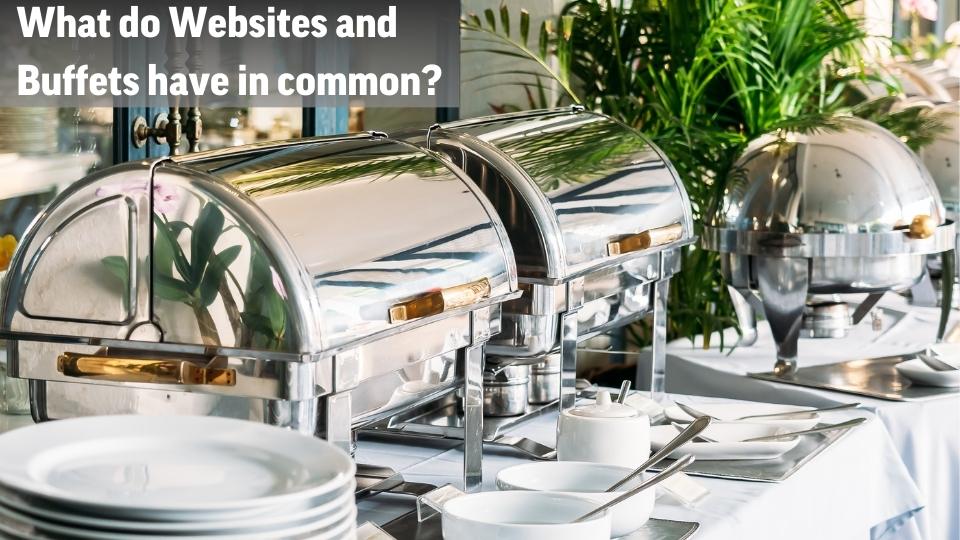
While a career in website design might not be the first thing that comes to mind when thinking of an all-you-can-eat buffet, the experience offers a surprising amount of transferable knowledge. Both buffets and websites aim to deliver a satisfying experience that compels users to return for more.
Planning is important. So, don’t put the gravy before the mashed potatoes. Here’s how my time working a buffet translates into actionable website design principles:
Strategic Layout Design
Working at a buffet taught me the importance of strategically positioning dishes to entice diners and guide their choices. Like how I had to turn over the tuna salad regularly to ensure freshness, website design should strategically place elements to guide users towards specific actions.
Clear Signage and Goal Orientation
I remember feeling frustrated when customers missed the sauces placed after the main dish, having to backtrack for them. This experience emphasizes the importance of clear signage and goal-oriented website content, ensuring users can easily find what they need to achieve their objectives.
Optimizing Space for Conversion
Seeing the same customers return week after week highlighted the importance of optimizing buffet space to maximize customer satisfaction and retention. Similarly, websites should optimize space to maximize conversion opportunities, ensuring returning users find value and are more likely to engage and convert.
Efficient Access to Goals
Just as I streamlined my buffet routine to minimize obstacles and wait times for customers, websites should provide efficient access to key goals. Streamlining the user experience, reducing friction points, and making it easy for users to accomplish their tasks can significantly improve conversion rates.
Proactive Support and Guidance
At the buffet, providing proactive assistance to customers ensured a smooth dining experience and encouraged repeat visits. Websites should offer similar proactive support and guidance, using features like live chat support or personalized recommendations to help users navigate toward their goals effectively.
Regular Optimization and Maintenance
Like the constant upkeep required to maintain freshness and appeal at the buffet, websites need regular optimization and maintenance to remain effective. Analyzing user data, conducting A/B testing, and making iterative improvements are essential for enhancing user experience and driving conversions.
Feedback-Driven Iteration
Just as customer feedback at the buffet helped us identify areas for improvement, website owners should actively seek and respond to user feedback to refine their strategies. This iterative process of gathering feedback, analyzing data, and making improvements ensures continuous optimization and alignment with user needs.
Strategic Accessibility Considerations
Ensuring accessibility in buffet layouts and website design is crucial for reaching a broader audience and achieving broader goals. By considering the needs of all users, websites can enhance usability, inclusivity, and, ultimately, conversion rates.
Goal-Centric Analysis and Adaptation
At the buffet, we regularly analyzed customer preferences and adapted our offerings to align with their needs. Similarly, website owners should focus on key performance indicators and adapt their strategies to optimize outcomes and drive conversions over time.
Final Thoughts
My experiences working at a buffet restaurant emphasized the importance of having a strategic plan and continually reviewing for any issues to improve. Just as I learned to turn over the tuna salad for freshness and navigated frustrations with sauce placement, website design requires thoughtful consideration of layout, signage, and user flow to guide visitors toward desired actions.
By optimizing space, providing efficient access to goals, and offering proactive support, both buffets and websites can enhance user experience and drive conversions. Regular maintenance, feedback-driven iteration, and goal-centric analysis are essential for identifying areas of improvement and refining strategies to better align with user needs and business objectives.
Ultimately, having a plan and actively reviewing for issues are critical practices for ensuring success and continuous improvement in both buffet operations and website design.
Ensure your website has all the key ingredients for success.



